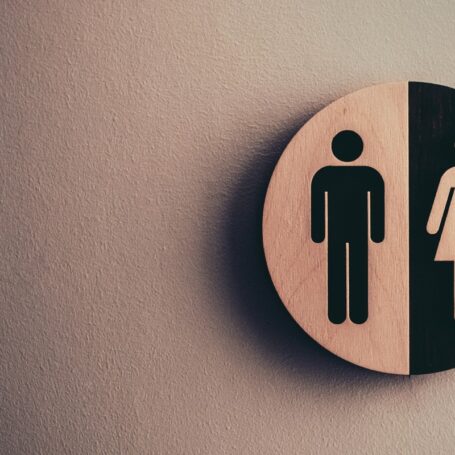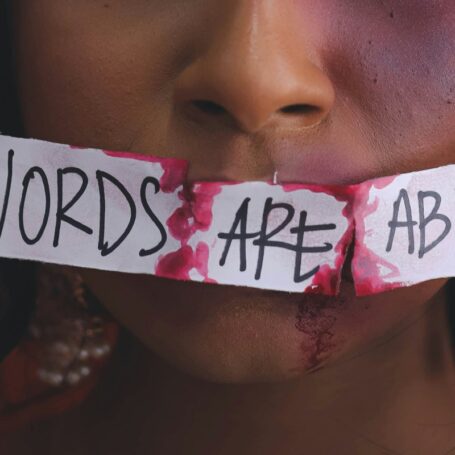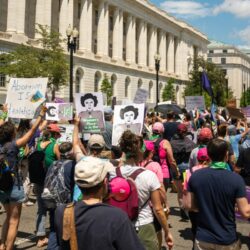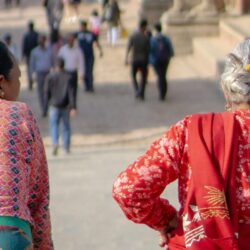Social and Behavioral Science Responds to 9/11: Some Readings
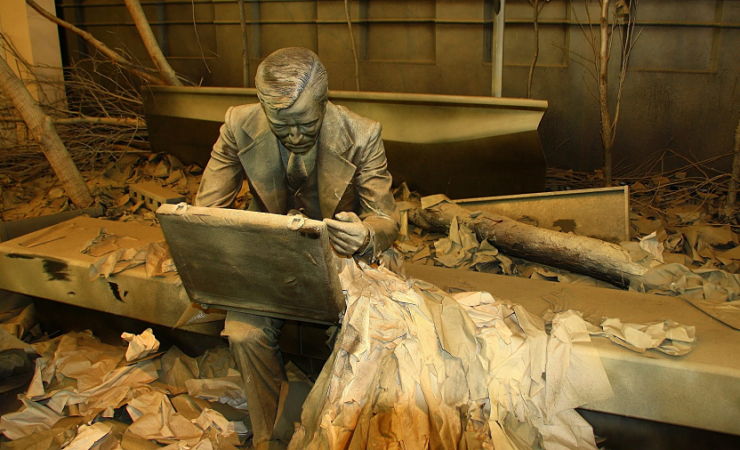
In the two decades since 9/11, social and behavioral science responded with a wealth of research on the motivations — and the aftermaths — of the terrorist attacks. The collection of free-to-read articles drawn from journals produced by SAGE Publishing (the parent of Social Science Space) during those intervening decades demonstrates the breadth of that research and the various ways that these acts of violence still resonate in lives and in scholarship around the globe.
These articles are ultimately just a sample of the scholarship either directly or indirectly influenced by 9/11. Please include scholarship you’ve found important or helpful on the subject in the comments.
Memory
“Performing trauma: Commemorating 9/11 in downtown Manhattan” | by Ross Poole in Memory Studies
There are two memorials at the site of the World Trade Center: the above ground Memorial Park and the below ground Memorial Museum. They embody very different conceptions of how an event such as 9/11 should be remembered.
“Retroactive Edits: 9/11, Television’s Popular Archive, and Shifting Popular Memory“ | by Philip Scepanski in Television & New Media
After 9/11, shows including 24, Family Guy, Friends, The Simpsons, and others had full episodes and/or specific scenes cut from distribution. This demonstrates how television’s popular archive is mutable, popular memory acts as a site of social and political struggle, and production, ancillary markets, official and unofficial distribution, the cultural standing of television and its genres, and other factors interact to determine which aspects of television’s past are available to the public at different moments.
“Representing, commemorating, and memorizing terrorist attacks: Discussing the US and French experiences“ | by Alice M. Greenwald, Clifford Chanin, Henry Rousso, Michel Wieviorka, and Mohamed-Ali Adraoui in Violence: An International Journal
How do societies and states represent the historical, moral, and political weight of the terrorist attacks they have had to face? Having suffered in recent years from numerous terrorist attacks on their soil originating from jihadist movements, and often led by actors who were also their own citizens, France and the United States have set up—or seek to do so—places of memory whose functions, conditions of creation, modes of operation, and nature of the messages sent may vary.
“From the Editors: 9/11 A Commemoration“ | by the editors of Sculpture Review
Since the fateful events of September 11, 2001, over 700 memorials have been erected around the world of the 9/11 terrorist attack and the senseless loss of thousands of innocent lives.
“9/11 – A New Pearl Harbor? Analogies, Narratives, and Meanings of 9/11 in Civil Society“ | by Brian T. Connor in Cultural Sociology
Through examining specific analogies, narratives, and metanarratives, I show how the comparison of 9/11 to the attacks on Pearl Harbor has led to varying meanings of 9/11 based on the employment of various genre based narratives and metanarratives of the events and the nation.
“Tragedy, Theodicy and 9/11: Rhetorical Responses to Suffering and Their Public Significance“ | by Robert Pirro in Thesis Eleven
Two general sorts of responses to the suffering caused by the 9/11 attacks are distinguishable in the statements of public officials, journalists, and citizens: one manifests a tragic sensibility, another takes the form of theodicy. Each response entails a distinctive set of expectations about the nature of political agency and solidarity in a democracy
“When press freedom meets national interest: How terrorist attacks are framed in the news in China and the US“ | by Ying Roselyn Du and Lulu Li in Global Media and China
This cross-nation, multi-event study examined 142 news stories from CCTV and CNN on two major terrorist attacks in China and the United States. It aimed to unveil how press system and national interest come into play in influencing media coverage of terrorism.
Critiques
“Psychodynamics of imagination failures: Reflections on the 20th anniversary of 9/11“ | by Amy L. Fraher in Management Learning
Analyzing the findings of The 9/11 Report, the author theorizes that two forms of macro-level hubris—America’s “hubris of empire-building” and Al Qaeda’s “hubris-nemesis complex”—amalgamated in a uniquely generative manner leading to events on 9/11.
“Washington View: From conflict to cooperation: 9/11 Day“ | by Maria Ferguson in Phi Delta Kappa
In a time of great political division, the 9/11 National Day of Service and Remembrance stands as an example of how Americans can turn tragedy and conflict into an opportunity for collective action. Maria Ferguson reflects on what she has learned from her work with the organization that established what is now the largest national day of service in the United States.
“9/11 changed everything’: an intertextual analysis of the Bush Doctrine“ | by Patricia L. Dunmire in Discourse & Society
This article presents an intra- and inter-textual analysis of the ‘Bush Doctrine,’ the security strategy response to 9/11 which sanctions a policy of preventive war.
“After the Fall: The Changing Experiential Conditions of Post-9/11 New York and Their Political Implications“ | by Karen Albright, Courtney B. Adams and Aaron L Panofsky in American Behavioral Scientist
This article documents the significant, though now largely forgotten, shifts in the cultural experience of living in New York City to trace the eventual construction of “normalcy” and its attendant hegemonic and political meanings.
“The Situated Contexts of American Terrorism: A Conjunctive Analysis of Case Configurations” | by Jeff Gruenewald, Grant Drawve, and Brent L. Smith in Criminal Justice and Behavior
The authors ask, “What combinations of terrorists’ ideological and situational factors are associated with terrorist outcomes in the United States?” While our findings generally show that the simplest forms of terrorism, including combinations of lone actors using unsophisticated weapons against nonhuman targets after little preparation, are associated with successful outcomes, there is heterogeneity in situated opportunities for preparing for and committing terrorism across terrorism movements.
Echoes
“The Impact of 9/11 on the Self-Employment Outcomes of Arab and Muslim Immigrants“ | by Chunbei Wang in International Migration Review
This paper finds that the Arab and Muslim immigrants are less likely to enter self-employment after 9/11, especially into industries that require higher levels of capital investment. However, there is no evidence that 9/11 has negative impacts on their exit decisions or earnings.
“Data measurement and the change in persistence of tourist arrivals to the United States in the aftermath of the September 11th terrorist attacks” | by James E. Payne and Luis A. Gil-Alana in Tourism Economics
This research note examines the change in data measurement for international tourist arrivals to the United States due to the requirement that all tourists must complete the INS I-94 entry form and its impact on tourist arrivals in the aftermath of the September 2001 terrorist attacks.
“Terrorism and Voting Behavior: Evidence from the United States“ | by Leonardo Baccini, Abel Brodeur, Sean Nossek, and Eran Shor in Research & Politics
Using an exhaustive list of terror attacks between 1970–2016 this article examines the impact of terrorism on voting behavior in the United States. Overall, the results indicate that terrorism has less of an influence on voters than is usually thought.
“Terrorism before and after 9/11 – a more dangerous world?” | by Meagan Smith and Sean M. Zeigler in Research & Politics
Was 9/11 the opening salvo in a new age of terrorism? Some argue that this act ushered in a more chaotic world. Others contend an increased focus on terrorism in the past 15 years is the result of conflating terrorist activity with insurgency. This paper sheds light on these claims by analyzing data on domestic and transnational terrorist incidence from 1989 to 2014.
The “Exotic Other”: A Poetic Autoethnography of Two Muslim Teachers in Higher Education | by Samah A. Elbelazi and Lama Alharbi in Qualitative Inquiry
Considering the current political climate and the terrorist attacks associated with few Muslims around the world, being Muslim females in the United States is challenging. The authors present their experiences of living a non-white existence when teaching at a white institution in higher education in the United States. To voice these experiences, they use poetry as a research method.
“Varieties of American Popular Nationalism“ | by Bart Bonikowski and Paul DiMaggio in American Sociological Review
Sociologists have devoted surprisingly little attention to the phenomenon in the United States, and historians and political psychologists who do study the United States have limited their focus to specific forms of nationalist sentiment: ethnocultural or civic nationalism, patriotism, or national pride. This article taps an unusually broad set of measures to explore national identification, ethnocultural and civic criteria for national membership, domain-specific national pride, and invidious comparisons to other nations, thus providing a fuller depiction of Americans’ national self-understanding.
“The Managed Heart Revisited: Exploring the Effect of Institutional Norms on the Emotional Labor of Flight Attendants Post 9/11“ | by Marlene Santin and Benjamin Kelly in Journal of Contemporary Ethnography
This article examines the emotional culture of flight attendants 32 years after Arlie Hochschild’s 1983 study, The Managed Heart. Using data collected by participant observation and informal interviews, the authors argue that flight attendants are empowered by post-9/11 institutional changes in security policies and as a result are using more discretion in how they perform courteous emotional labor.
“Transnational terrorism, US military aid, and the incentive to misrepresent“ | by Navin A. Bapat in Journal of Peace Research
This study proposes a strategic explanation for the United States’ continued provision of military aid to host states with problems of terrorism, despite its poor empirical record. The provision of military aid provides a disincentive for host states to reach a negotiated settlement with terrorist groups, and therefore prevents terrorist organizations from altering the status quo that is favorable to the USA. This suggests that while military aid may not be effective at actually disarming terrorist groups, it can be effective at keeping terrorist groups out of power.
“The Significance of the September II, 2001 Terrorist Attacks for United States-Bound Migration in the Western Hemisphere“ | by Christopher Mitchell in International Migration Review
The economic and political effects of the September 11 terrorist attacks weakened Latin American and Caribbean economies, reduced employment among Western Hemisphere immigrants living in the United States, and hindered new migrants’ access to U.S. territory. Thus, the 9/11 events probably increased long-term motivations for northward migration in the hemisphere, while discouraging and postponing international population movement in the short run.

